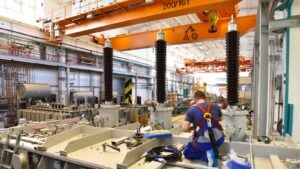The financier told TV audiences the United States appears stuck in a phase where companies are cautious about adding or shedding workers, a pattern that leaves job seekers waiting longer and employers reluctant to commit.
He also pointed to artificial intelligence as a reason executives are slow walking headcount decisions while they reassess workflows and required skills.
The September ADP National Employment Report showed private payrolls fell by 32,000, a rare monthly decline that followed a prior slowdown in summer hiring.
Washington’s shutdown has paused major releases, leaving markets to parse private surveys and high frequency indicators instead.
Jobless claims have edged higher from very low levels in recent weeks, while measures of job openings and quits point to less churn and fewer outside offers.
This is the texture Rattner described, with companies keeping existing teams in place and opting to delay big staffing moves until visibility improves.
Executives across industries are testing automation and machine learning to streamline tasks once handled by junior staff that experimentation can suppress near term hiring even as it creates demand for new technical roles.
Our earlier explainer on whether firms should be afraid or excited about AI taking over jobs and the economy offers a useful map of where the technology is most likely to bite and where it may lift productivity. As Rattner noted, the uncertainty alone is a headwind for recruiters and applicants.
The Federal Reserve cut rates in September to cushion against softer growth, and traders still expect the central bank to move carefully as it weighs inflation progress against labor slack.
Bond markets have swung on each incremental jobs proxy, and equities have treated weak but not terrible labor reads as friendly to a gradual easing path.
Seasonal factors can amplify that volatility, as we outlined in why does September always destroy the stock market, a primer on the month’s outsized market moves.
If upcoming private surveys and weekly claims point to persistent weakness, rate-cut expectations could firm and defensives might outperform. If the data stabilize, rate-sensitive growth names may keep the upper hand.
Either way, companies that articulate a clear AI adoption plan and demonstrate productivity gains should be better placed than peers who freeze hiring without a roadmap.



















